A Closer Look
Like most ITX boards, ASRock’s Z490 Phantom Gaming-ITX/TB3 comes in a deceptively small box. The Phantom Gaming branding is quite prevalent.
Inside the box, you get the following inclusions:
- Quick Installation Guide
- Software Setup Guide
- Phantom Gaming Postcard
- Support CD
- 2 x Serial ATA (SATA) Data Cables
- 1 x ASRock WiFi 2.4/5 GHz Antenna
- 2 x Screws for M.2 Sockets
- Reusable Cable wraps.
ASRock’s Z490 Phantom Gaming-ITX/TB3 follows the standard Mini-ITX form-factor. Intel’s LGA1200 socket sits nearly in the center of the board with two full-sized DDR4 ram slots to the right. The rear I/O is covered sans a vent for active cooling on the VRM. The top segment of the VRM also has a fan.
Like most ITX boards, there are a ton of components on the rear of the board. The only thing of note here is the second M.2 slot that supports 2280 drives only and can work with PCIe 3.0 or SATA drives.
The rear I/O cover is pre-installed and floats a few millimetres in each direction for the perfect installation in any case. It has the following:
- Intel WiFi 6 802.11ax Antenna Ports
- HDMI 2.0 Port
- DisplayPort 1.4
- Optical SPDIF Out Port
- 3 x USB 3.2 Gen2 Type-A Ports (10 Gb/s)
- Thunderbolt 3 40Gbps Type-C Port (Also functions as a USB 3.2 Gen2 10Gbps)
- PS/2 mouse/keyboard port.
- 2x USB 3.2 Gen1 Ports
- (Dragon RTL8125BG based 2.5Gb RJ-45 Ethernet
- Clear CMOS Button
- Gold Audio Jacks
A tall riser card just above the PCIe slot holds far more than the obvious primary M.2 slot.
You get a speaker header, USB 2.0 header, a pair of SATA ports, and even some diagnostic LED’s.
The card is quite tall, as is the VRM heat sink, so be careful if you are planning on a super-compact build.
The bottom edge of the board only has the main PCIe x16 slot. On a side note, it supports PCIe bifurcation riser cards to split into x8/x8 or x8/x4/x4 slots.
The front edge of the board has the front panel I/O header, a fan header, a pair of SATA ports, a USB 3.0 header, the main 24-pin power, and an RGB header.
The top edge of the board has two more fan headers, a digital/addressable RGB header, an actively cooled VRM heat sink, and the 8-pin EPS power connector for the CPU.
Cooling on the Phantom Gaming ITX is pretty robust. Even the chipset is cooled with a heat pipe to the active rear VRM segment, and the main M.2 sinks heat into this as well.
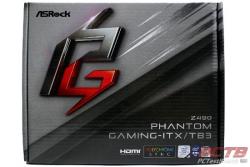
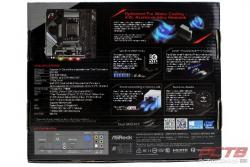
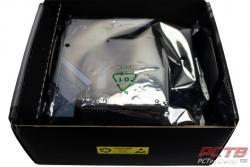
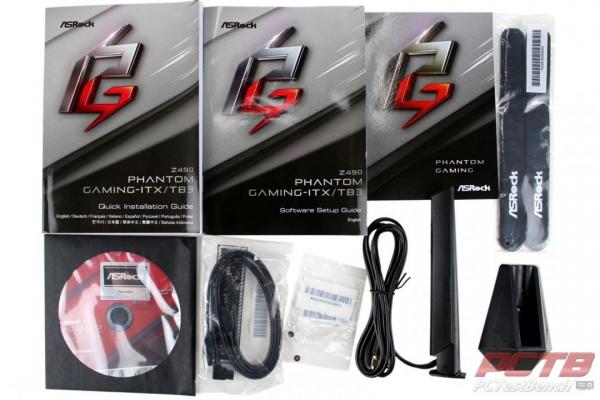
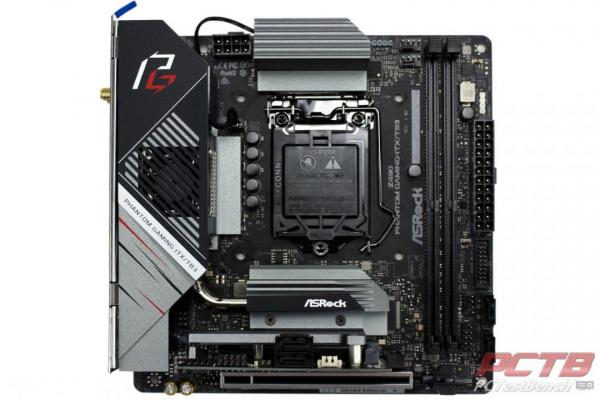
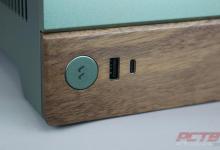
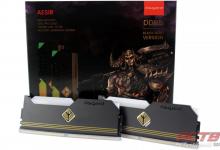
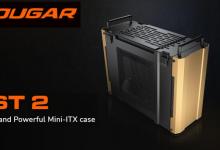
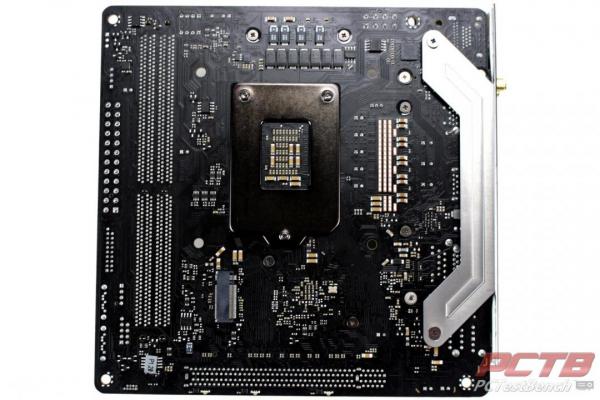
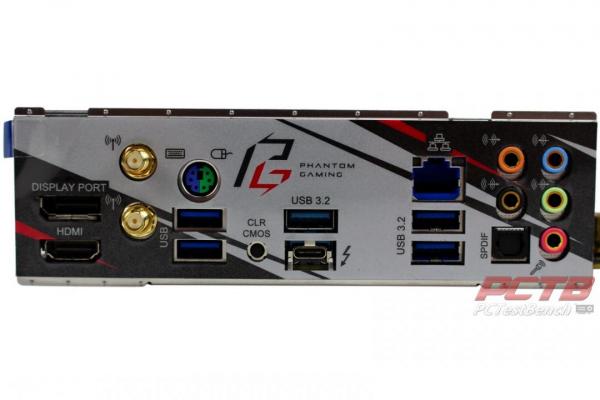
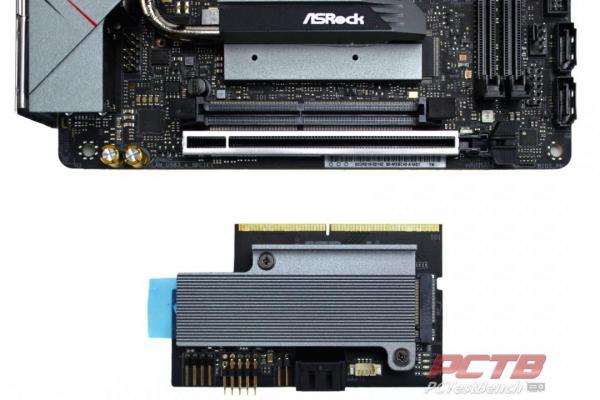
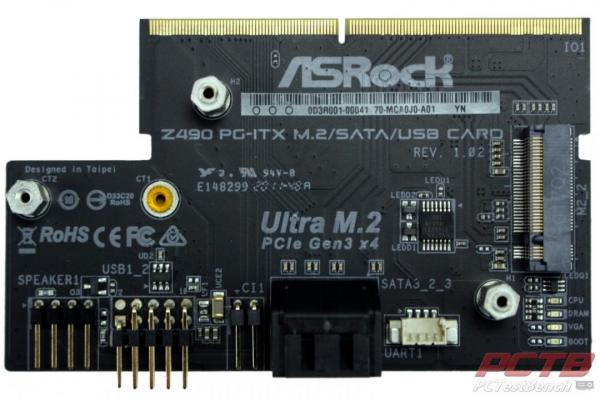
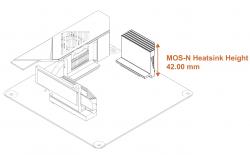
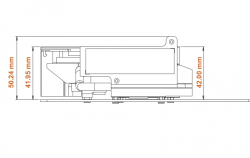
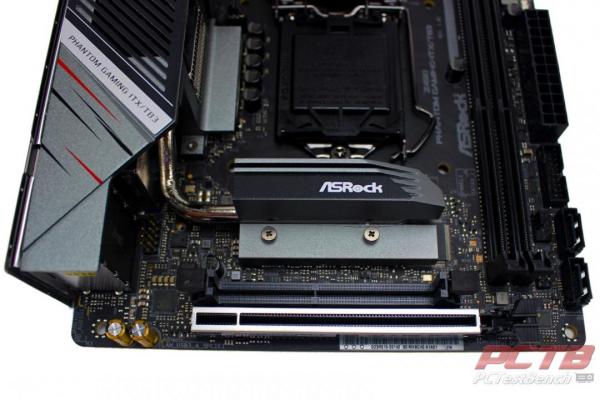
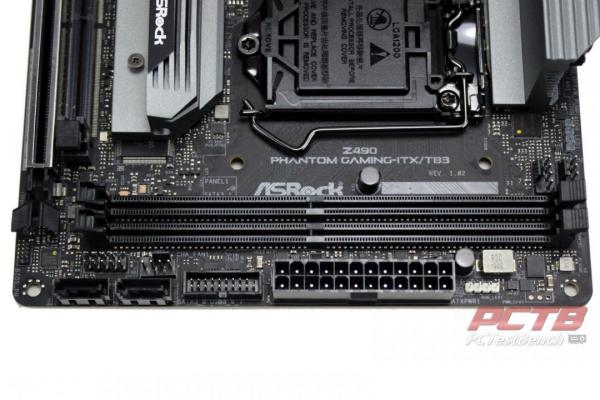
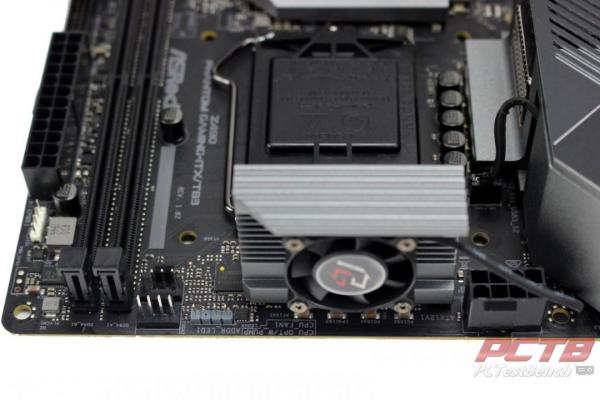
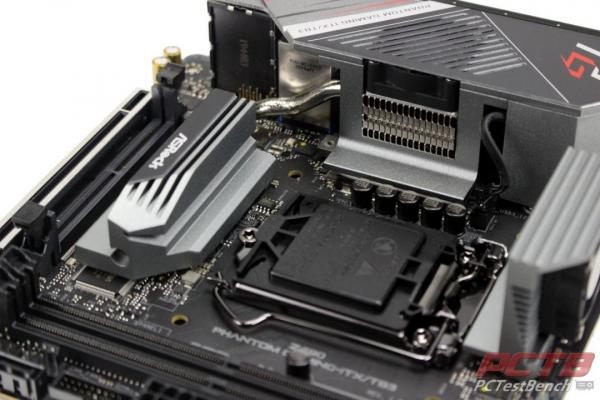

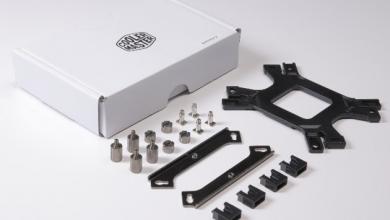
Check Out Our Amazon Store with Modders Inc
Please Support PCTestBench as Every Purchase Helps